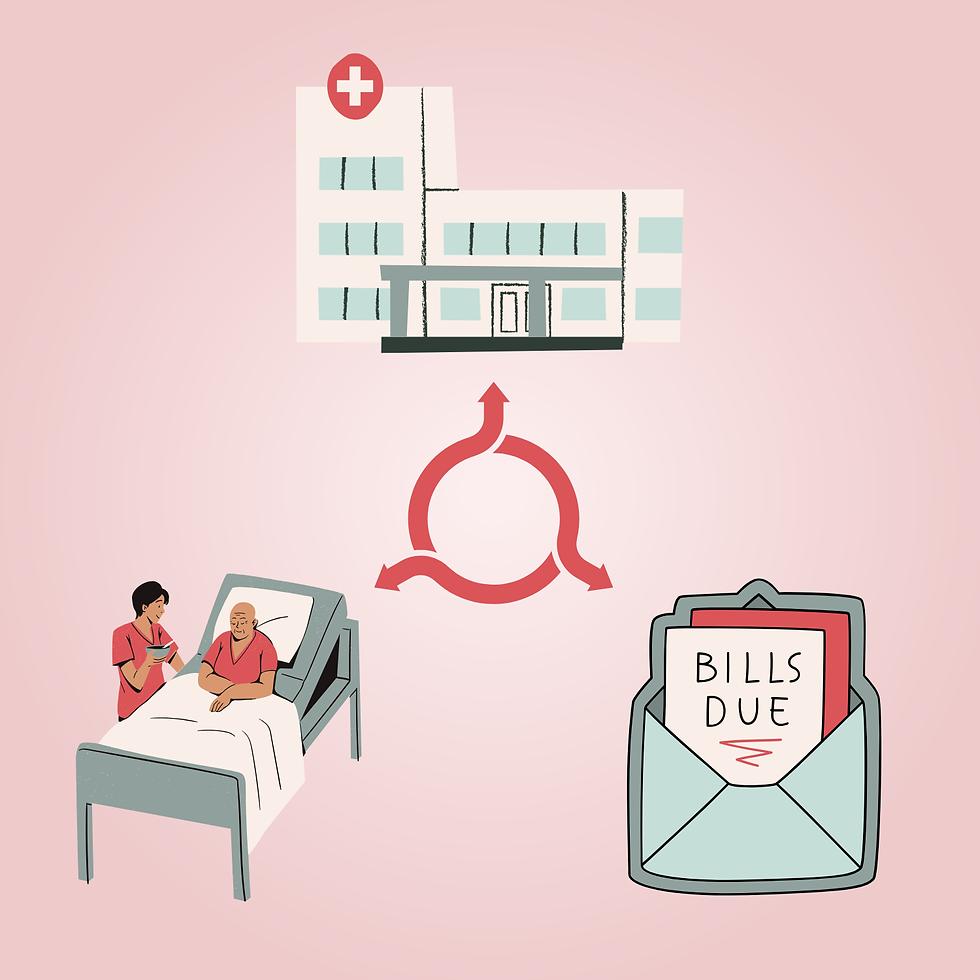Healthcare Pricing Transparency: An Ethical Debate
- Jacqueline Rodriguez
- Mar 29
- 3 min read

Healthcare pricing has long been a subject of confusion and frustration for Americans. Despite being one of the most significant financial burdens on families, healthcare pricing remains notoriously obscure, leaving consumers at a disadvantage when it comes to understanding and navigating costs. In an effort to address this issue, President Donald Trump issued an executive order on February 25, 2025 mandating that hospitals and insurance companies disclose more detailed pricing information to patients; this executive order represents progress towards a more transparent and patient-friendly system. However, it has sparked debate about its effectiveness in lowering healthcare costs and empowering patients.
The hidden nature of pricing contributes directly to the financial anxiety many Americans experience. Health insurance companies, hospitals, and physicians traditionally negotiate rates behind closed doors, making it nearly impossible for patients to compare prices and make informed decisions about their care. Nearly 20% of American patients undergoing in-network elective surgery or giving birth report receiving surprise bills. [1] This lack of transparency has led to significant financial strain for many individuals, especially when faced with unexpected medical bills for services they did not anticipate or understand the cost of in advance. According to KFF polling, approximately half of U.S. adults claim it is challenging to afford health care costs. Additionally, one in four report that they or a family member in their household have faced difficulties paying for health care in the past 12 months. [2]
President Trump’s executive order, “Making America Healthy Again by Empowering Patients with Clear, Accurate, and Actionable Healthcare Pricing Information,” seeks to prioritize patients by providing them with more meaningful and accessible price information. It requires hospitals and health plans to maintain consumer-friendly displays of pricing details, including negotiated rates with providers, out-of-network payments, and the actual prices paid by them or their pharmacy benefit managers for prescription drugs. [3]
Price transparency is a cornerstone of patient welfare and health equity. By knowing the accurate costs of their treatment, patients gain the ability to make informed decisions about their healthcare while considering their financial circumstances. This transparency fosters competition among providers, driving down costs and benefiting consumers who might otherwise face limited or costly options. Additionally, clear pricing information helps reduce the occurrence of surprise medical bills, enabling patients to anticipate expenses and avoid unexpected charges. Greater transparency also holds hospitals and insurance companies accountable for their pricing practices, promoting fairness and equity across the healthcare system.
A significant concern regarding transparency in healthcare is its potential to reduce competition. Public disclosure of pricing information might lead hospitals to engage in price collusion, aligning rates with each other rather than competing to lower costs. This issue has been observed in Denmark, where concrete price postings resulted in unintended negative outcomes. [4] Such practices could undermine the competition that transparency advocates aim to promote, ultimately inflating costs for consumers.
Another ethical concern is the risk of prioritizing price transparency over more critical healthcare reforms. While transparency may address certain financial aspects, it fails to tackle deeper systemic challenges, such as improving access to care, expanding insurance coverage, or enhancing the overall efficiency of the healthcare system.
While increasing transparency holds great promise by empowering patients, fostering competition, and mitigating surprise medical bills, it also comes with ethical concerns, such as the risk of price collusion and overshadowing more urgent systemic reforms. Transparency is undeniably a vital component of healthcare reform; however, it is only one piece of the puzzle. Achieving a truly affordable and equitable healthcare system will require a multifaceted approach that addresses the deeper, structural challenges faced by all Americans.
Reviewed by Abby Winslow
Resources
[1] Lopes, L., Montero, A., Presiado, M., & Hamel, L. (2024, March 1). Americans’ Challenges with Health Care Costs. Kaiser Family Foundation. https://www.kff.org/health-costs/issue-brief/americans-challenges-with-health-care-costs/
[2] Pollack, H. A. (2022). Necessity for and Limitations of Price Transparency in American Health Care. AMA Journal of Ethics, 24(11), E1069-1074. https://doi.org/10.1001/amajethics.2022.1069
[3] The White House. (2025b, February 25). Making America Healthy Again by Empowering Patients with Clear, Accurate, and Actionable Healthcare Pricing Information. The White House. https://www.whitehouse.gov/presidential-actions/2025/02/making-america-healthy-again-by-empowering-patients-with-clear-accurate-and-actionable-healthcare-pricing-information/
[4] Albaek, S., Mollgaard, P., & Overgaard, P. B. (1997). Government-Assisted Oligopoly Coordination? A Concrete Case. Journal of Industrial Economics, 45(4), 429–443. https://doi.org/10.1111/1467-6451.00057



Comments